Foreword
Over the years, Uniswap has been constantly driving functional and innovative reforms to make swapping more user-friendly and fair. For example, we have seen Uniswap Mobile, the Fillers Network in UniswapX, the ERC-7682 for unifying cross-chain intent standards, and the upcoming hooks for customizing AMM pools in Uniswap V4.
On October 10, Uniswap announced their overall optimistic Rollup, Unichain. The chain aims to become a one-stop liquidity hub in the super-chain ecosystem, providing traders with near-instant swap experiences and lower spreads, while maximizing the privacy and integrity of MEV participants in the process, using TEE.
While these visions are impressive, users question whether another L2 is needed, with some, including Vitalik, commenting that Unichain is "just another Uniswap clone on each Rollup". In other words, he believes that launching a Uniswap clone on a new chain is actually the same purpose as launching Unichain itself.
So, is Unichain a boon or a bane? Today's article will explore the architecture of Unichain and understand the "necessity" of Unichain.
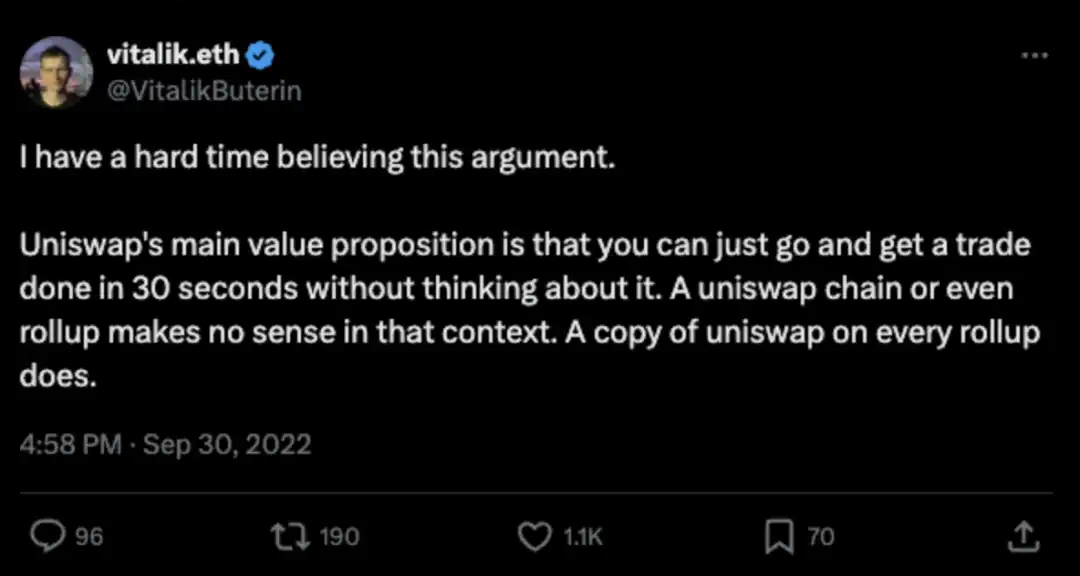
1. What is Unichain?
Unichain is an optimistic rollup, aiming to execute near-instant transactions, while using privacy technology TEE to minimize the potential impact on on-chain LPs and swappers.
Since Unichain is built with the same attributes and standards as other optimistic aggregation chains, it can now leverage the interoperability in the super-chain ecosystem and access the shared liquidity across the entire network.
To this end, Unichain brings four major innovations:
· Rollup-Boost and Sequencer Builder Separation
· Block Building in TEE
· Flashblock
· Unichain Verification Network (UVN)
1.1 Rollup Boost: Sequencer Proposer Separation (SBS)
Block Building is the key to solving the MEV problem.
Prior to MEV Boost, Ethereum was plagued by censorship risks and poor user experience. Due to the fierce competition among searchers for profit-driven order inclusion, users faced high transaction fees and frontrunning issues. To address these problems, flashbot built MEV-boost.
MEV Boost separates the roles of block builders and proposers by introducing relayers to aggregate block builders and proposers, and submitting the most profitable blocks to the proposers for signing. This design effectively decentralizes the MEV extraction process and democratizes the MEV profits between validators and professional builders.
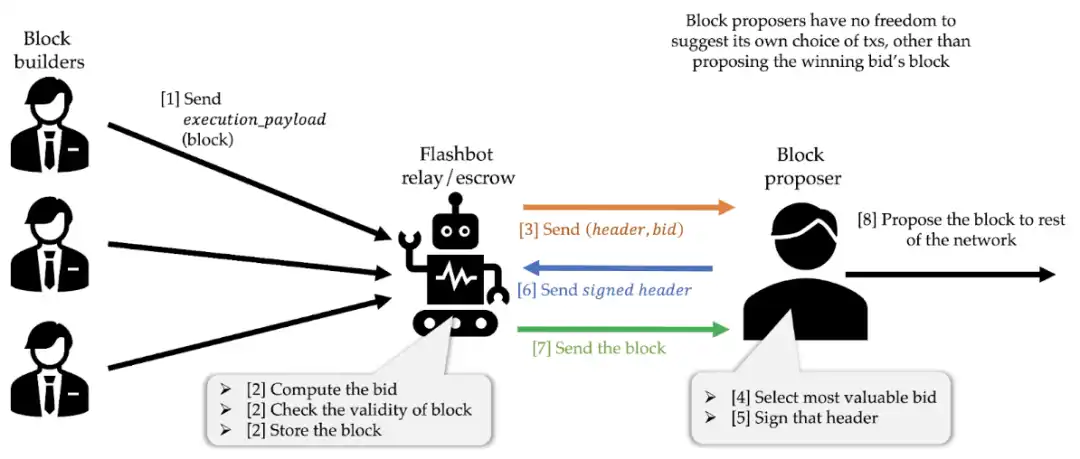
The concept of Rollup Boost is similar to MEV Boost, where L2s with enabled SBS can separate the block building process from the sequencer's execution engine through a system called "Block Builder Sidecar".
In short, the system has 4 main components internally:
· OP-node
· OP-geth
· Sidecar / Blockbuilder Sidecar
· External Block Builders
Below is the Optimism architecture diagram, where we can see the sequencer node (aka op-chain) is composed of Op-geth and Op-node.
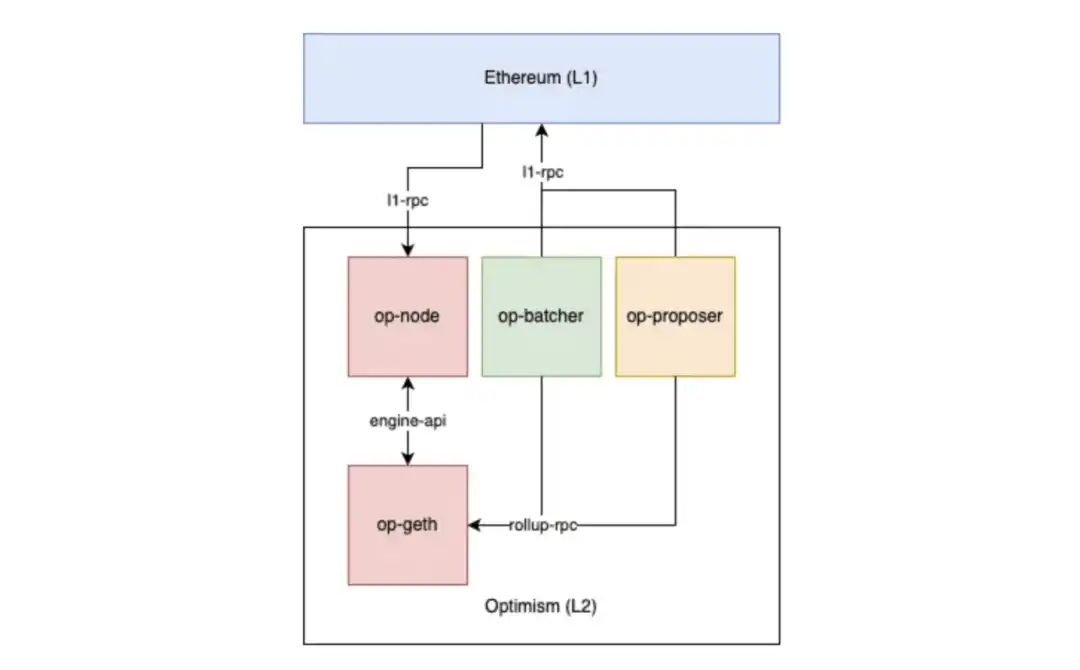
To separate the roles of block building and proposing within the sequencer, a component called Sidecar is added. The Sidecar enables the OP node to receive blocks from external builders, creating a market between block builders and proposers.
The workflow is as follows:
1. The OP node sends updates to the sidecar.
2. The sidecar, as an intermediary, forwards the updates to op-geth.
3. When the OP node requests a block from OP-geth, the sidecar intercepts the request.
4. The sidecar then forwards the request to the external block builders, which is the "slot" where external builders can bid and compete.
5. Upon receiving the external/winning block, the sidecar sends it to the OP node.
6. If no block is received, the sidecar will forward the locally generated block.
The main benefit of the block builder sidecar is that upgrades do not require modifying the OP chain client, while allowing for more flexible, simplified, and censorship-resistant transaction ordering rules. However, the addition of an intermediary (sidecar) may introduce some latency.
1.2 Rollup Boost: Sequencer Proposer Separation (SBS)
Rollup Boost takes this a step further by introducing Trusted Execution Environment (TEE) into the block building process to ensure the integrity of transactions, making the process even more robust. Thanks to the latest hardware advancements like Intel TDX, real-time performance has become possible.
For those unfamiliar with TEEs, they are secure enclaves within a processor or hardware, providing enhanced privacy by preventing unauthorized entities from reading internal data. At the same time, TEEs maintain a high level of integrity, as the code inside the TEE cannot be modified or replaced.
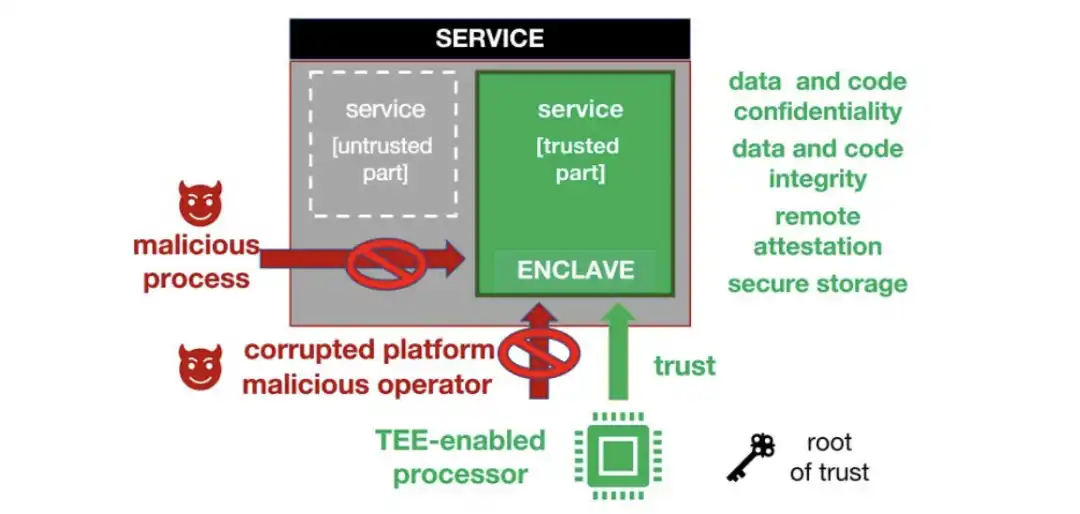
In the context of Rollup Boost, Unichain will use a TEE builder to reduce the risk of MEV leakage. This means that when bundles or transactions are sent to the TEE block builder, the integrity of the TEE can guarantee that the order in which the transactions arrive at the builder is not affected by external parties trying to extract more MEV.
Additionally, TEE provides trustless reversion protection, which can shield users from failed transactions, as the TEE can run simulations and detect and eliminate any reversion transactions before processing them. This not only improves the efficiency of the AMM (as there will be no failed transactions going through), but also enhances the overall user experience, especially during times of high transaction volume.
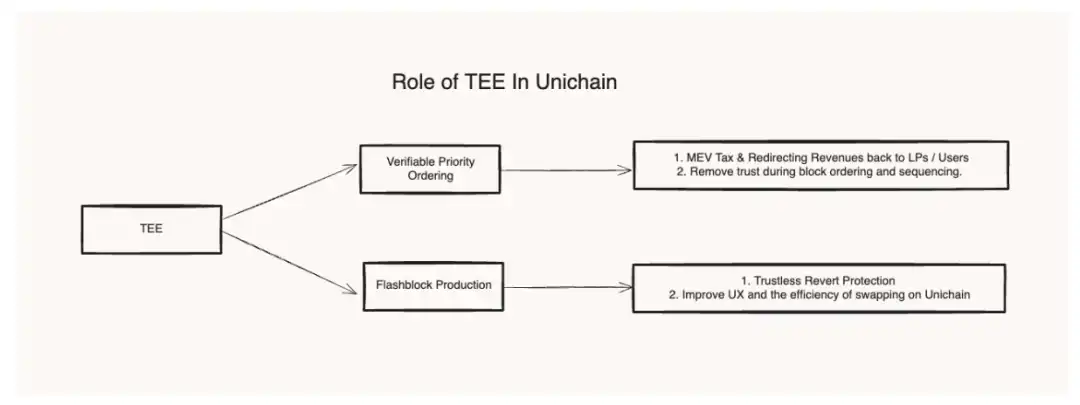
To increase the transparency of the ordering and block building process, execution proofs will be made public to users after block generation. This proof is crucial for verifying the priority ordering, a concept that will be explained in the following paragraphs.
1.3 Flashblock and Verifiable Block Building
Ethereum's average block time of 12 seconds is very slow and cannot meet today's demands for acceptable transaction experiences. Additionally, the slow block time exposes the network to more MEV opportunities and makes it susceptible to network congestion from spam transaction attacks.
L2s aim to improve Ethereum's scalability by bundling off-chain transactions and submitting proofs to verify the correctness of the computation. To provide a smoother transaction experience, Unichain's goal is to achieve a 250ms block time. However, to achieve this, Unichain needs a system that can continuously transmit blocks with low latency and near-instant confirmation times. Solana can process 440M in parallel, but to achieve such speeds, it sacrifices a certain degree of decentralization.
Previously, in most L2 block proposal processes, the serialization of data and state root generation would introduce latency, making fast block times infeasible.
To solve this problem, flashbot created flashblock, the idea of which is to "shard" the block into smaller slices, thereby shortening the time between blocks to maximize UX/LP benefits.
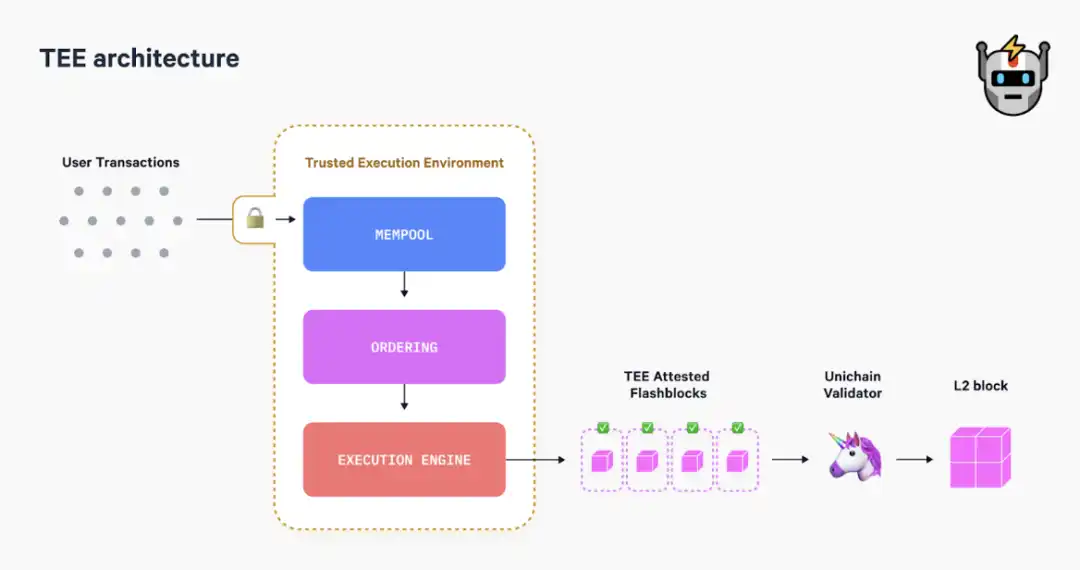
Flashblock is a pre-confirmation issued by the TEE block builder, for partial but fast confirmation.
First, transactions are streamed into the TEE block builder. If L2 has enabled SBS, the block builder will be separated from the sequencer. After ordering and bundling, the transactions will gradually form what is called a Flashblock, a partial confirmation. Flashblock will be broadcast to other nodes for verification every 250 milliseconds from the sequencer.
Since the latency is caused by the state root generation and serialization in the L2, Unichain amortizes the cost of the block building process by computing the state root and consensus only once for multiple partial blocks, significantly reducing the latency.
In summary, the power of Flashblock lies in:
· Shorter block times reduce the risk of adverse selection cost for LPs.
· Flashblock provides early execution state of the existing state, making wallet and frontend integration easier.
· Rapid transactions provide an excellent user experience (UX).
Furthermore, since TEE can enforce priority ordering in each Flashblock, applications and smart contracts can now levy MEV taxes, hijack priority ordering to serve their own interests, and redistribute MEV to LPs and users.
As Dan Robinson emphasized in his tweet, allowing applications and users to "control" their MEV is one of the primary functions/purposes of Unichain.
Even better, priority ordering can be verified through the public execution proof in the TEE. This allows users to accurately verify how their transactions are executed. This is crucial, as this is the only way for users to ensure priority ordering is fair.
1.4 Unichain Verification Network (UVN)
Nowadays, most L2 sequencers are centralized, and the behavior of a single sequencer can affect the fairness of MEV, the liveness or finality of blocks, etc. For example, if a sequencer publishes an invalid block and submits a fraud proof to challenge it, the resulting chain reversion would actually impact the chain's speed.
To address the potential single point of failure in sequencers, Unichain introduces the Unichain Verification Network (UVN).
UVN adds an extra layer of finality by focusing on verifying blocks through proofs of the canonical chain (Ethereum) when proposing blocks. This process is actually similar to parallelization, where different stages of block construction can happen concurrently within a period.
However, without further details in the documentation, it is still premature to make assumptions about the pros and cons.
1.5 $UNI Token
The $Uni token is now not just a governance token, but also a utility token.
To become a validator, operators must first stake $Uni as collateral on the mainnet. The smart contract will track the balances and update the state through Unichain's native bridge.
At the start of each epoch, the current staked balances will be snapshotted, and fees will be proportionally distributed based on the staking weights. Validators with the highest $UNI staking weight will be selected as the active set, and they can publish proofs to earn a portion of the validation rewards. Validators who miss or fail to publish proofs will not receive rewards, and the rewards will carry over to the next epoch.
Based on the limited public information, we can infer that the validation rewards will be:
(L2 fees paid by Unichain users - MEV taxes levied by applications - the cost of bundling submissions to Layer 1)
2. Unichain vs Appchain vs General Rollup
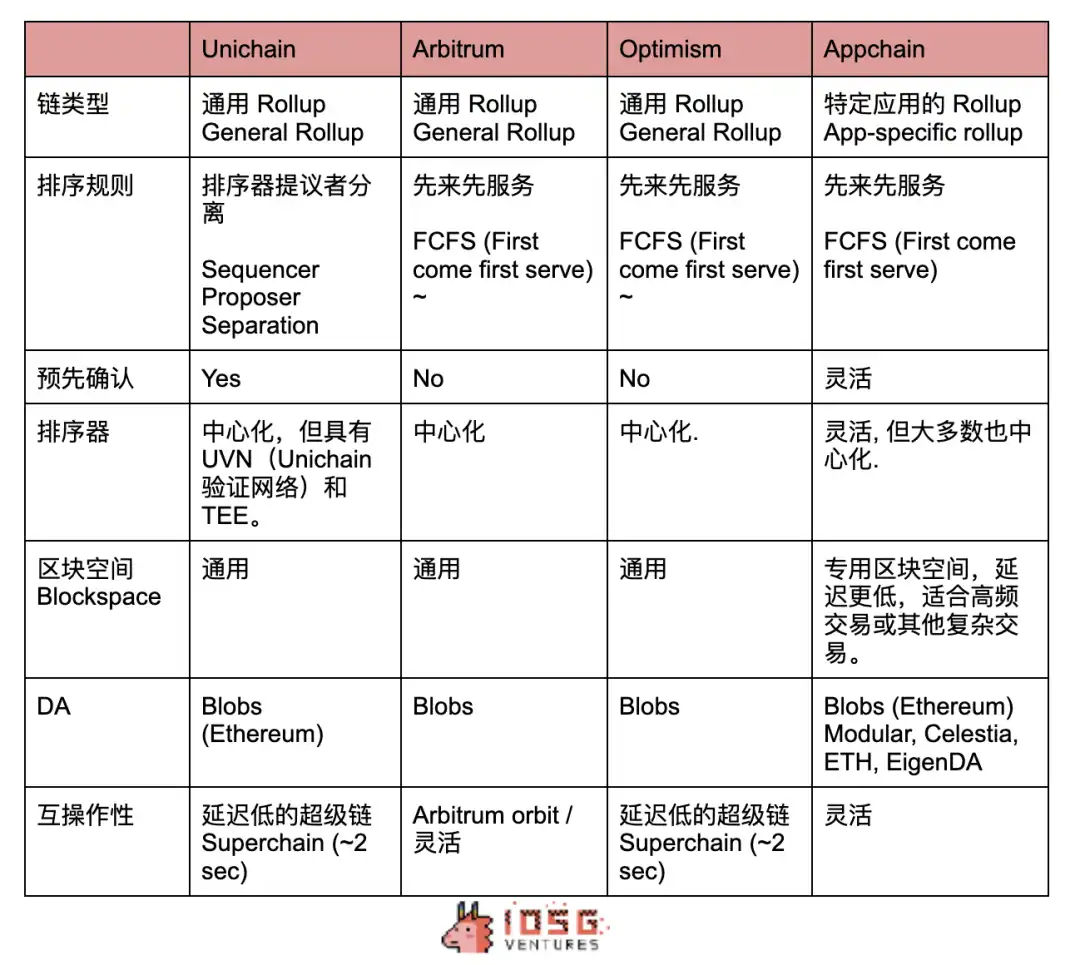
· The key differentiating factors between Unichain/General Rollup and Appchains are MEV, pre-confirmation, and block space competition.
· Since Appchains can flexibly customize their architecture, they can implement different MEV mechanisms to mitigate issues such as eliminating censorship risk or reducing MEV leakage.
· Meanwhile, through the integrity properties provided by TEE, Unichain mitigates and reorganizes MEV by ensuring that transaction ordering is not influenced by any third party. Verifiable priority ordering also ensures fair MEV and potentially redistributes MEV revenue to users and liquidity providers.
· Most sequencers in the market are centralized, allowing them to extract maximum value from the order flow. In contrast, Unichain takes a more "public good" approach, as its MEV redistribution mechanism limits the amount of MEV the original sequencer can capture to some extent.
· Unichain is built on OpStack, the unified standard for optimistic chains, which enables Unichain to achieve low latency (around 2 seconds) through its native optimistic interoperability design to read messages and transfer assets on the superchain. On the other hand, Appchains can leverage different interoperability solutions, such as joining the IBC ecosystem or building L3 on Arbitrum Orbit (although this is less common for OpStack L2s).
3. Conclusion
Unichain is an interesting concept that not only provides users with a smooth transaction experience with pre-confirmation, but also minimizes the MEV exploitation window due to the shorter block times enabled by flashblcoks. This innovation also reduces the risk of adverse selection for LPs and allows users/LPs to benefit from lower slippage, etc.
On the other hand, the integrity and privacy attributes of the Trusted Execution Environment (TEE) ensure that on-chain users can enjoy the guarantee of fair, verifiable, or application-managed MEV redistribution, thanks to the priority ordering on Unichain.
Unichain's verification process also protects the sequencer from single points of failure, with validators playing a crucial role in rapidly finalizing verified blocks, while transforming the $Uni token into a productive asset with yield.
However, by enabling MEV redistribution, the sequencer actually loses the potential to capture the maximum amount of MEV, but more of the gains are being returned to the on-chain LPs/users.
While some may think Unichain may not have enough appeal to attract asset migration to the new chain, I believe that as the L2 ecosystem continues to evolve, interoperability between chains will allow Unichain to leverage larger liquidity pools, such as those from Base.
Additionally, apart from Grants (which Unichain can also provide in the form of USDC after Uniswap DAO), new DeFi Apps have enough incentive to build on Unichain, as they can benefit from customized MEV redistribution strategies. Meanwhile, assets within the ecosystem can benefit from the TEE to mitigate MEV leakage.
Therefore, with its speed, fairness of MEV redistribution, and the potential interoperability it may offer, Unichain could become the next hub for DeFi.








